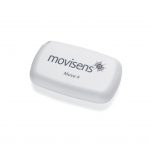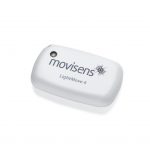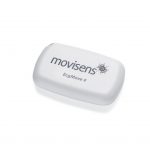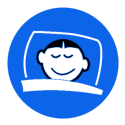Sleep Monitoring
Sleep forms the foundation upon which all performance and well-being stand. In today's modern world, a shortage of sleep occurs due to many different causes.
Sleep disorders, psychological disorders and (secondary) diseases rise within our population as a consequence of modern living. With so many ailments linked directly to the lack of sleep, researchers need adequate tools to track objective sleep data to assist in developing remedies.
Thanks to the sensitivity of our accelerometers, movisens sensors provide an excellent method of ambulatory sleep monitoring.

Recommendations for Sleep Monitoring
Sleep Detection
Using acceleration data allows us to make statements about sleep behaviour. One can see how long a person sleeps or how often sleep is interrupted. With all movisens sensors (Move 4, EcgMove 4, EdaMove 4, LightMove 4) allow a basic sleep detection. If you only require a differentiation between sleep and wakefulness, the activity sensor Move 4 provides adequate data for the task.

Assessment of the Intention to Sleep
The best environment to sleep consists of a cool, dark room. With the gap between work and home life shrinking in the modern economy, and the addictive and ubiquitous presence of social media demanding our attention, the lights stay on longer and longer.
How long does it take to fall asleep or sleep? Are they even attempting to sleep, or merely staring at their phones? The LightMove 4 provides greater insights into the activity of the participant, using its five channels of light detection to assess the ambient conditions. This allows an objective assessment of when participants intend to go to sleep, in addition to the ability to detect the actual onset of sleep.

Assessment of recovery at night
So far we’ve dealt with sleep duration, but if you’re interested in the quality of sleep, the EcgMove 4 provides further possible insights. The ambulatory ECG and activity sensor gathers Ecg data at 1024Hz, in order to provide a rich source of information for analysis.
An analysis of the heart rate and heart rate variability of the participant gives an insight to the recovery level of the participant, and indirectly an insight into the quality of their sleep.

Subjective sleep analysis
In addition to the objective measurement of sleep, movisens offers the experience sampling platform movisensXS as a possibility to collect subjective information from participants. Smartphone based questionnaires can capture the participants feelings about their sleep patterns and quality.
The participants can set their own time to receive an alarm followed by a questionnaire, so that researchers capture this information at the very start of the participants day.

Example Studies
SleepCoach: Measurement and improvement of sleep quality through individual sleep coaching
Around a quarter of the adult population in Germany reports that they suffer from occasional to permanent problems falling asleep and sleeping through the night. Poor sleep causes aggression and depression, reduces work efficiency and affects memory and judgement. Click here to read more
Useful Information
Sleep- what is it?
A condition of body and mind which typically recurs for several hours every night, in which the nervous system is inactive, the eyes closed, the postural muscles relaxed, and consciousness practically suspended.
Read more about the validation and the development of a new classification algorithm. For this purpose acceleration data are used to distinguish the states "nonwear and sleep/wake". Ambulatory sleep scoring using accelerometers—distinguishing between nonwear and sleep/wake states
Literatur
Weeß, Hans-Günter. (2016). Die schlaflose Gesellschaft: Wege zu erholsamem Schlaf und mehr Leistungsvermögen. Schattauer.
